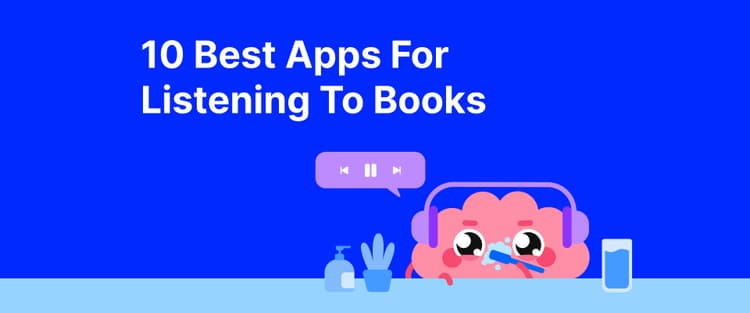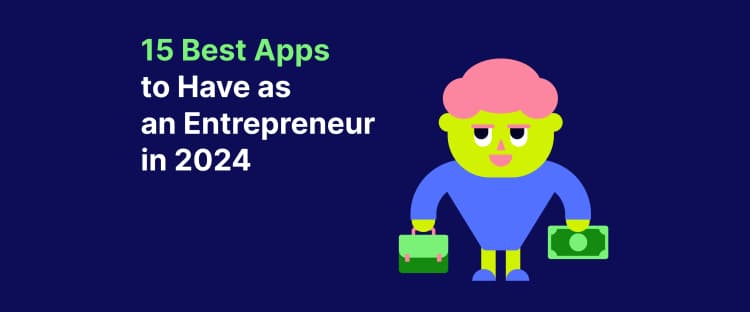A story by Iterable, a leading customer communication platform and Headway partner.

Mobile learning has gained popularity in the last few years—in part, due to the pandemic. With students and teachers only connecting via virtual platforms like Zoom, mobile learning became integral for keeping students engaged. But mobile learning is also gaining traction simply because of ease-of-use and convenience. Users can take their learning with them wherever they go: at the airport, in a doctor’s waiting room, etc.
As a result of COVID-19 plus this new desire for digital learning on-the-go, the mobile learning market exploded, reaching $42.16 billion in 2021. What’s more, it’s expected to continue to grow and reach $155.81 billion in 2026.
With such massive growth incoming, let’s dig deeper into some benefits of mobile learning and explore what a cross-channel mobile learning experience would look like.
Benefits of Mobile Learning
One benefit of mobile learning is the sheer volume of apps that exist. There are a variety of mobile learning apps available, from K-12 education apps to language learning apps to corporate training apps—there’s something for everyone. In fact, there are over 567,000 educational apps to choose from.
Another benefit of mobile learning is the ability to multitask while learning. Rather than sitting down with a pen and paper and taking diligent notes as a monotone teacher recites lessons, mobile learning gives the user the ability to learn how and when they want. Whether they’re on a morning walk or cleaning out their car, users can be learning at the same time.
A third benefit is gamification. A lot of mobile learning apps gamify the overall experience to make learning fun (cheesy, but true). By adding gaming aspects—think: adding levels or rewarding with badges—to mobile learning apps, users become more motivated to continue engaging with the app.
But, outside of gamification, how else can you ensure users stay engaged with your mobile learning app? This is where implementing a cross-channel experience can make a huge impact.
Headway is a great example of a mobile learning app that promotes multitasking and gamification. Their bite-sized lessons make it easy for users to fit learning into their days without making a huge time commitment. As one reviewer said, “When I use the Headway app it distracts me and I find myself listening and learning whilst completing chores.” You can watch, listen, or read 15-minute summaries while commuting, standing in a line, brushing your teeth — because the Headway app is perfect for growing on the go.
One of the ways Headway helps users stay consistent with their learning is through gamification. For example, you can pass self-growth challenges targeted at improving particular life areas, earn achievements along the way, and get inspired by your streak.

A Mobile Learning Cross-Channel Experience
We’ve been talking a lot about mobile apps, but that’s just one channel. Yes, sure, the actual learning takes place within the app, but what happens when a user closes the app? How do you make sure they open the app again and continue their learning journey?
Enter: the cross-channel experience. Through marketing channels like email, SMS, push notifications, and more, there are multiple ways to connect with users to keep them engaged with your mobile learning app long after the app itself has been closed.
Trying a Text Message
Let’s use a gamified mobile learning app as an example. Let’s say the user logs onto the app around 2pm every day. This time comes and goes and they haven’t opened the app yet. It makes the most sense to try and engage with users where they most recently were. Plus, people. Plus, people are on their phones a whole lot.
With the right marketing technology you can send them an SMS message noting they usually complete lessons around this time and encouraging them to jump back in. Again, this SMS message could feature a link that, when clicked, takes the user right back to the app.
Sending an Email
Here’s another example. If a user has been diligently completing lessons but all of a sudden closes the app and hasn’t opened it for a week, your customer communication platform could trigger a re-engagement email that shows the user how close they are to the next level. The email could include a deep link that, when clicked on their phone, opens the app.
Channel-to-Channel Communication
And, if you want to kick it up a notch, these channels can actually communicate with one another. So, from the last example, say the user fully ignores the SMS. After a few hours you could send an email or push notification with a message like “Leaving us on read?” and continuing to encourage them to complete a lesson. You’re acknowledging that you already sent them a text, but still trying to re-engage them.
A true cross-channel strategy will recognize each individual user and the unique journey they’re on. Armed with this information, you can create custom, automated messages that are relevant and timely for the user, increasing engagement and retention.
Learning About the User
While you may think your mobile app users are the only ones doing the learning, a seamless cross-channel experience requires you to learn a lot about who is using your app.
Every interaction, every ignored message, and every clicked link are opportunities to understand better how each individual user engages with your brand and how to send them marketing communications going forward. Treat every interaction as a learning experience, and you’ll be able to create a mobile learning cross-channel experience like no other.
Learn how Iterable helps Headway achieve a seamless cross-channel experience.
NOTES
Asia-Pacific was the largest region in the mobile learning market in 2021. North America is expected to be the fastest-growing region in the forecast period. Source
The demand for digital education is growing due to increased mobility, learning convenience and flexibility, interactive and collaborative learning, rising adoption of digitization by educational institutions, and others. Source
Technological advancement is a key trend gaining popularity in the mobile learning market.Technological advancements in mobile learning refer to the use of emerging interactive technologies such as augmented reality (AR), virtual reality (VR), and artificial intelligence (AI) to revolutionize the learning process. Source







